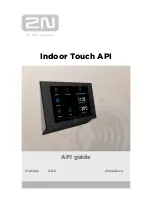
www.etsolar.com
Subject to technical modifications without notice. 2016 © ET Solar Group
www.etsolar.com
Subject to technical modifications without notice. 2016 © ET Solar Group
2
3
The assembly is to be mounted over a fire resistant roof covering material when roof
mounting is intended for the modules, the fire resistance of roof covering or wall
should be rated for the application.
A torsion and corrosion-resistant anodized aluminum frame ensures dependable
performance, even under harsh weather conditions. Eight pre-drilled mounting holes,
located on the aluminum alloy frame, are provided for ease of installation. They are
designed to be used with metric M6×1(Torque 12 Lb-in) stainless steel screws.
The module must be attached and supported by at least four bolts through the
indicated mounting holes.
Most installations will use the four inner mounting holes on the module frame.
Depending on the local wind and snow loads, additional mounting points may be
required(e.g. if the combined wind and snow load is as high as 5400pa, please use
eight bolts).
If module clamps are used to secure the module, the torque on the clamp bolt
should be around 8–10 Nm.
A minimum of four module clamps should be used, two on each long frame side, in
the general clamping areas denoted by the wide arrows on the drawing.
Depending on the local wind and snow loads, additional module clamps may be
required(e.g. if the combined wind and snow load is as high as 5400pa, please use
eight clamps).
When installing the modules, the face of the units should be placed where they are
highly exposed to the sun. It is recommended that the modules usually face the
equator; thus, in the Northern Hemisphere the surface should be oriented towards the
south, and in the Southern Hemisphere, towards the north. Usually the angle between
modules and the ground should be local latitude ± (5°~10°) as shown in Fig.2.
The recommended standoff height is 5 in. (127mm).If other mounting means are
employed this may affect the UL Listing.
The specific angle depends on the sunlight condition, local climate and the actual
application requirements. The appropriate angle of elevation has a very important
relationship to the output power of the modules and the cost of the construction. The
surface of the modules should avoid shading and be kept clean from foreign
materials such as dirt.
3. Installation of modules
www.etsolar.com
3.1.1 Mounting with Bolts
3.1.2 Mounting with Clamps
WARNING!
3.1 Installation
Do not attempt to clean a module with a broken glass cover or a perforated
backsheet. Such a module can present a serious shock hazard.
WARNING!
The local shading of modules may cause serious hot-spots and damage the modules.
The modules are for use in applications where they do not serve as a member of the
building primary structural frame.
Fig.2 Assembly installation angle




























